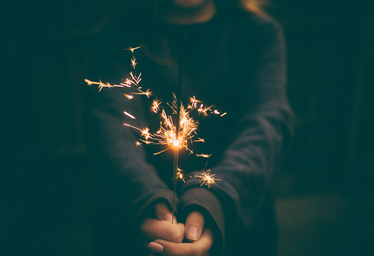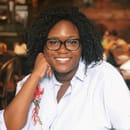On Tuesday April 2nd, I performed in the acting club Opening Act for their annual PlayReading Gala which is their big fundraising event. The club usually has students in the club write plays and perform them to potential donors and have professional actors perform alongside us. The plays don’t have to be about social justice issues but that seems to be the trend. This year they picked a play I co-wrote to be featured.
My play stemmed from the Parkland shootings. Students in my school had a walkout to protest gun laws and this was the basis of our idea. However, I went to a high school with security and we have to go through metal detectors and scanners every morning so very quickly the play became about the presence of security in schools itself. I and students I went to highschool with felt mistreated by them and targeted. The play was about our anger. For the Gala however, the play had to be cut from 30 minutes to 10 minutes. The person editing the play saw the need to talk about race. It was in there but we thought it would distract from the story’s main goal. But the 10 minute version was just as good. It created a conversation and reminded me of moments in high school that connect directly to topics we have read about and discussed in class.
One thing that my friends commented on was which schools have security. The “high risk” schools are always in the urban areas. To quote my friend, “People from the hood know not to do that shit.” The more I thought about that statement the more I agreed with it. People from the hood are already scrutinized by the police. They are often poor, black/hispanic, or both. Police have already scrutinized these groups in society so they couldn’t be stupid enough to bring a weapon to school because they are already a suspect without a weapon. Security only adds on to the scrutiny and makes students feel that there is something wrong with them.
Another moment from school is when my friends and I decided to search up the shooter of the Parkland incident. We quickly fell down the rabbit hole of looking at other school shooters and serial killers. We realized they all had one thing in common. They were all white males. This trend is what fueled a line in the play I wrote. “A black guy with a gun is just another thug / A Muslim guy with a gun is just another terrorist, A white guy with a gun needs a psychotherapist / because one bad apple couldn’t possibly spoil the bunch / in that case their transgression can be expunged.” It bothered me how despite the trend of all those people being white, white people don’t have a stigma around them but Muslim people and black people have unwarranted scrutiny and are labeled as bad automatically. Just because of 9/11 (which I am almost convinced was an inside job but that is a story for another time) Muslims in America and Siks bear so much discrimination. Structures in place that has forced black people into the situations like being involved in gangs (The documentary Crips and Bloods really shows this if you are interested) labels every black as a thug. But a white guy who is a shooter at a mass shooting doesn’t have the same effect. I am not saying we should start doing the same to white people but the difference is unfair and no one should be stigmatized at all.
While thinking about my performance I started thinking about other social issues. I recently watched a YouTube video of this guy from South Africa (he’s white) named Caspar Lee and he “shadowed” police officers there. The first thing I think about when I hear South Africa is Nelson Mandela and the apartheid. However, now the apartheid has ended and things are better now and South Africa is a great destination for safaris and vacation. I think most people would agree with this description. However from Caspar Lee’s video, I was enlightened about the gang activity that is taking place in South Africa. The video added some context as to the rise of the gangs. And the similarities with a documentary called “Crips and Bloods” were striking. Both gangs were born out of institutionalized segregation. For South Africa it was the apartheid and for the US it was “separate but equal” law. After segregation and the apartheid ended both South Africa and the US had certain areas still isolated. This was Compton in the otherwise glamourous Los Angeles and I’m not sure the area in South Africa but it is overlooked by the glamourous Cape Town the same way Compton is. In both countries oppressed peoples started fighting one another and claiming terf. Caspar interviewed one of the gang members and his answers were almost verbatim of the interviews from the “Crips and Bloods” documentary. He said he had morals and he was a devout Muslim but he has to put aside his feeling because in his environment it is either kill or be killed. Very similar to the gang life in the US. Kids are also recruited to join gangs from very young ages because they are less likely to serve a lot of time. I find it crazy that this is taking place right under our noses. I had no idea that South Africa had this kind of gang activity. The trend between the two countries is a scientist’s dream. Kind of like how they use twins to do nature vs nurture experiments and put them in different environments to see what happens to each. This happened here. Two societies in different parts of the world encounter similar histories but and the same outcome arose. Why did this happen? What is the root of this? What is the reason for this trend? I am not sure what the answer is but I think that is quite the phenomenon.
There was another play in the show that spoke on gender roles in america and coincidently the chapter I had to read in class was about gender. This all reminded me of a video I made in my film class last year. It angers me alot when I hear girls being sent home from school because their outfit distracts the boys and they could be wearing a sweater. The fact that schools are trying to control what students wear and just female students in particular is so enraging. This only perpetuates the problem of victim blaming. If a boy stares at a girl during class it is automatically the girls fault for wearing a low cut top and the not the boy’s fault for not being taught to be a decent human being and pay attention in class. Then some people justify it with the saying “boys will be boys”. First of all, that phrase only perpetuates rape culture and gender roles. Our idea of what a boy/masculine is comes from what society has made it out to be. Boys will be boys doesn’t have to mean boys will be dogs who can’t control themselves. It is this way because we have allowed it to be this way. Many instances have happened in my life where I saw this problem. One time I encountered a school official who told me to cover up, and my sister had a friend who a school official who was a woman by the way told her that she shouldn’t run with all the other kids because her boobs were too big and the boys might look. This is just another statement that enables rape culture. And rape culture also hurts men because it makes it seem that men cant get raped, they have to be aggressive, and they cant cry. Rape culture as a whole hurts everyone and is something that needs to be talked about more. This is just the surface of what it is but I wanted to share my opinion on it.



